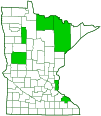Podzol ant
(Formica podzolica)
Conservation • Description • Habitat • Ecology • Distribution • Taxonomy
Conservation Status |
|||
| IUCN Red List | not listed |
||
| NatureServe | NNR - Unranked |
||
| Minnesota | not listed |
||
Description |
Podzol ant, also called podzol mound ant, occurs in two unconnected areas of North America. The eastern range is the northern United States and southern Canada west to Minnesota and south to Ohio. The western range is the mountainous west from Alaska and northern Canada to northern Mexico. It is found mostly in cold coniferous forests. Workers are ⅛″ to 5 ⁄16″ (4 to 8 mm) long, black, and somewhat shiny. Winged males and queens are about the same size, 3 ⁄16″ to ½″ (5 to 13 mm) long. The head is broadly rounded in outline. The rear margin is rounded, not distinctly concave. The eyes are large. The facial plate above the mouth (clypeus) is not notched. The finger-like sensory mouth part (maxillary palp) is long and has six segments. The basal segment of each antenna (scape) is long, but is shorter than the length of the head. The first body segment behind the head (mesosoma) has two distinct elevated areas (bumps). It is covered with three exoskeletal plates, the pronotum and mesonotum covering the thorax, and the propodeum covering the first segment of the abdomen that is fused to the thorax. The pronotum and mesonotum form one smooth convex bump, the propodeum a second convex bump. The second abdominal segment (petiole) is narrow and waist-like, and has a single raised bump (node). The remainder of the abdomen (gaster) is bulbous. The head, mesosoma, legs, and first three segments of the gaster are covered with silvery appressed hairs. The fourth segment of the gaster is bare or almost bare. There are single rows of erect golden hairs at the end of each segment. On the first segment there are also usually 10 to 25, sometimes just 1 to 3, erect hairs not including the row at the end. Those are each shorter than or equal to the distance between them. |
Size |
Worker: ⅛″ to 5 ⁄16″ (4 to 8 mm) Male: 3 ⁄16″ to ½″ (5 to 13 mm) Queen: 3 ⁄16″ to ½″ (5 to 13 mm) |
Similar Species |
Habitat |
Cold coniferous forests |
Ecology |
Season |
|
Behavior |
Podzol ant builds large mounds in the acidic, infertile soil of coniferous and boreal forests. The mounds stand out from the surrounding forest because they are covered with pale, acid-bleached subsoil. |
Life Cycle |
|
Larva Food |
|
Adult Food |
|
Distribution |
||
|
Sources |
|
| 8/27/2025 | ||
Occurrence |
||
Common |
||
Taxonomy |
|
Order |
Hymenoptera (Ants, Bees, Wasps, and Sawflies) |
Suborder |
Apocrita (Narrow-waisted Wasps, Ants, and Bees) |
Infraorder |
Aculeata (Ants, Bees, and Stinging Wasps) |
Superfamily |
Formicoidea (ants) |
Family |
|
Subfamily |
Formicinae |
Tribe |
Formicini |
Genus |
|
Complex |
|
Subordinate Taxa |
|
|
|
Synonyms |
|
|
|
Common Names |
|
podzol ant podzol mound ant |
|
Podzol is a type of soil found in coniferous and boreal forests. In includes an acid-bleached, 1½″ to 3″ thick layer of subsoil beneath a 2″ to 4″ thick layer of decomposing organic material. |
|
|
|
Glossary
Gaster
The bulbous part of the abdomen of ants, bees, and wasps. In ants it usually begins at segment three.
Palp
Short for pedipalp. A segmented, finger-like process of an arthropod; one is attached to each maxilla and two are attached to the labium. They function as sense organs in spiders and insects, and as weapons in scorpions. Plural: palpi or palps.
Scape
In plants: An erect, leafless stalk growing from the rootstock and supporting a flower or a flower cluster. In insects: The basal segment of the antenna.
Visitor Photos |
Share your photo of this insect. |
||
This button not working for you? |
||
Alfredo Colon |
||
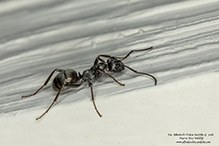 |
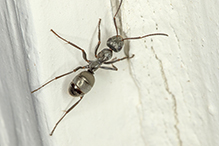 |
|
 |
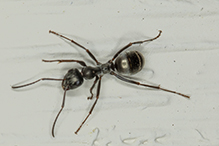 |
|
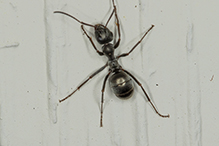 |
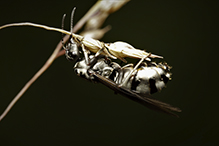 |
|
MinnesotaSeasons.com Photos |
|

Slideshows |
|

Visitor Videos |
Share your video of this insect. |
||
This button not working for you? |
||
|
Other Videos |
Fusca-group Ants (Formicidae: Formica podzolica) Wresting with a Leaf |
About
Published on May 19, 2011 Photographed at Grand Forks, North Dakota (19 May 2011). Thank you to James Trager (@Bugguide.net) for identifying preserved specimens from this colony! |
Fusca-group Ants (Formicidae: Formica podzolica) on Soil-turned Mound |
About
Published on Jun 21, 2011 Photographed at the Turtle River State Park, North Dakota (20 June 2011). Thank you to James Trager (@Bugguide.net) for identifying preserved specimens sampled from this colony. |

|
Created: 2/11/2019 Last Updated: © MinnesotaSeasons.com. All rights reserved. |
